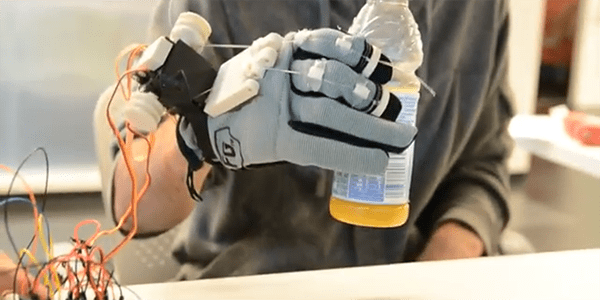UW’s CSNE (Center for Sensorimotor Neural Engineering) hosted a weekend-long hackathon October 10-12. 15 Students from UW, MIT and San Diego State University were split into five teams of three students – one from each school – to build a device or system that aligned with the CSNE’s core missions of uniting the human brain with technology, improving the quality of life for people suffering from sensorimotor neural disabilities and engaging the next generation of scientists and engineers.
UW Bioengineering Ph.D. student Tyler Libey was the event’s lead organizer and several other BioE Ph.D. students participated directly in the project teams, including Laurie Zhang, Ian Dryg and Nile Wilson.
After introductions and team-building exercises on Friday night, participants had 36 hours (from 9am Saturday until 9pm Sunday) to create something with the materials/equipment available. Every team got the same box of basic items including wires, resistors, Arduinos, duct tape and glue, but each team was allowed to use unique, more advanced items such as Oculus Rift, Microsoft Kinect, Bluetooth EMG system and Emotiv Epoch.
On the following Monday morning, each team presented their work to a panel of judges. The judges evaluated the teams on the device or system’s alignment with the CSNE mission and vision, project innovation, technological merit and presentation quality. They ultimately selected iHand, which presented a device that allows the wearer to grasp objects by blinking, as the winning team. The other teams included:
- Reincarnation – a virtual reality game to help patients in rehabilitation or someone who has a neck injury
- Stress-tector – a device that detects stress and anxiety
- Touchtype – a system to learn how to use a chorded keyboard
- A visual aid device that helps people with neck injuries or paralysis see more of the surrounding environment


